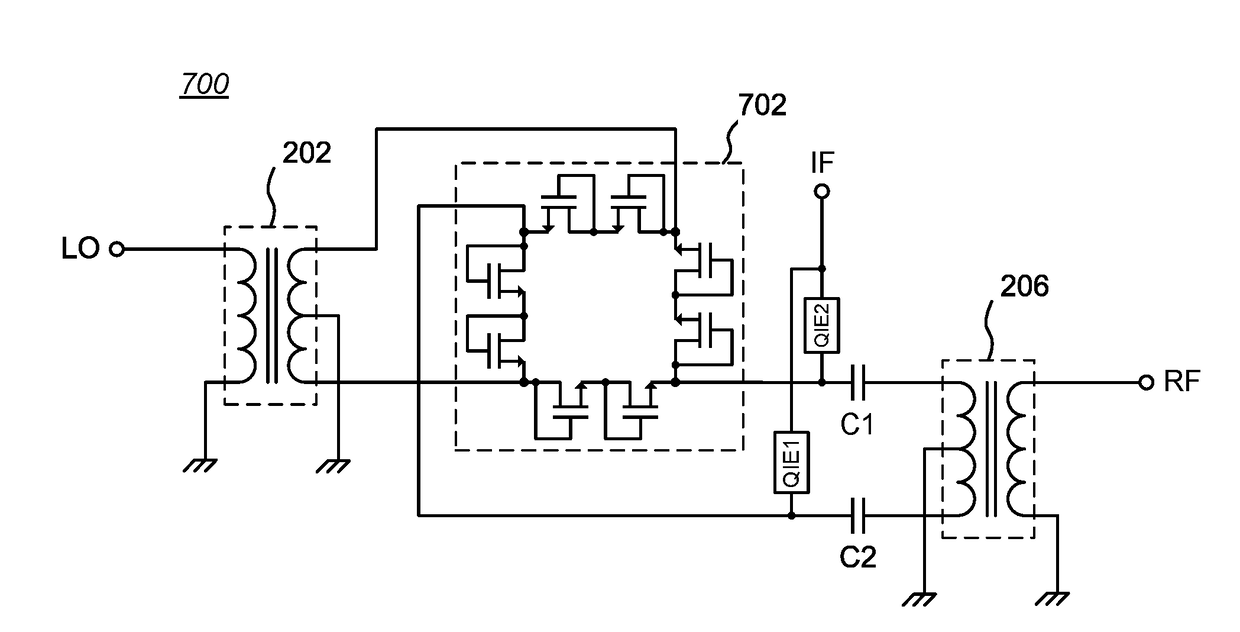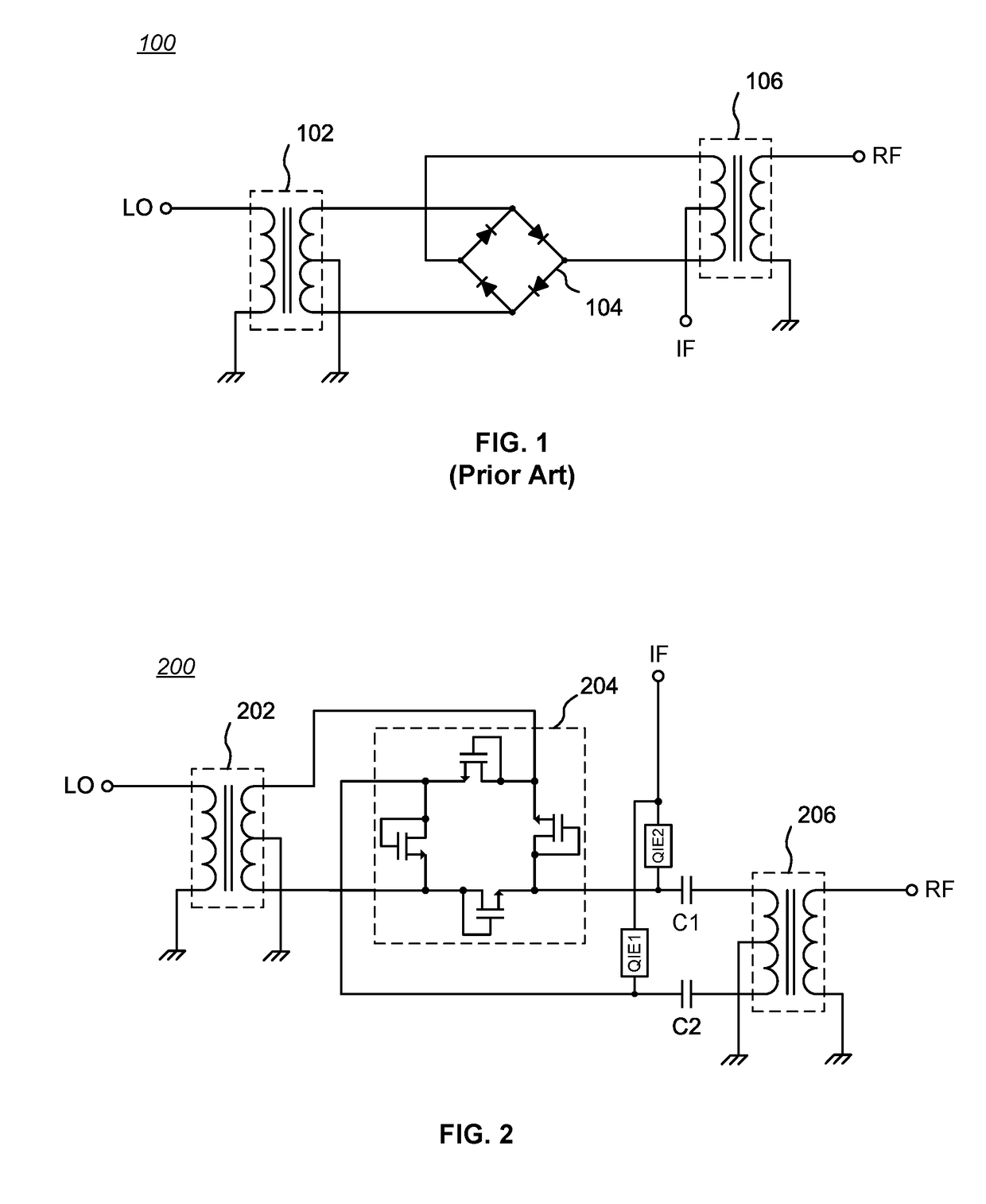Double balanced mixer
a mixer and double-balance technology, applied in the field of electronic circuits, can solve the problems of slow rate versus lo power increase of the third-order input-referenced intercept point (iip3) value, rapid decrease of the conversion gain (cg), and inability to use more than one diode per branch for linearity improvement, etc., to achieve good conversion gain and iip3 values, improve linearity, and wide bandwidth
- Summary
- Abstract
- Description
- Claims
- Application Information
AI Technical Summary
Benefits of technology
Problems solved by technology
Method used
Image
Examples
first embodiment
[0026]FIG. 2 is a schematic diagram of a first embodiment of a FET-based double balanced mixer 200 in accordance with the present invention. A first balun 202 is configured to receive a local oscillator (LO) signal on the unbalanced side and generate two balanced LO output signals that are coupled to two corresponding opposing nodes of a four-node FET ring 204. A second balun 206 is configured to pass a radio frequency (RF) signal on the unbalanced side of the second balun 206. The two legs of the balanced side of the second balun 206 are coupled to the remaining two opposing nodes of the FET ring 204 through DC-blocking capacitors C1, C2 which provide isolation between the RF and intermediate frequency (IF) signal ports. The first balun 202 and the second balun 206 may be external transformers, but are preferably integrally fabricated with the other circuitry on an IC, in known fashion.
[0027]In the illustrated embodiment, the IF signal port is coupled through quarter-wave isolation...
second embodiment
[0037]The linearity of a drain-gate connected FET-based DBM can be improved even further by using more than one drain-gate connected FET per branch of the four-node FET ring 204. For example, FIG. 7 is a schematic diagram of a second embodiment of a FET-based double balanced mixer 700 in accordance with the present invention, having two drain-gate connected FETs per branch of a four-node FET ring 702. More specifically, the FET ring 702 comprises four branches connected as a ring, with each branch including two drain-gate connected FETs (preferably low threshold voltage FETs); the circuitry is otherwise similar to the circuit shown in FIG. 2. The source of each drain-gate connected FET (indicated by an arrow in FIG. 7) is connected to the drain of a next drain-gate connected FET in the ring; the nodes of the FET ring 702 are between branches containing adjacent sets (pairs, in the illustrated configuration) of drain-gate connected FETs. While FIG. 7 shows two drain-gate connected FE...
PUM
 Login to View More
Login to View More Abstract
Description
Claims
Application Information
 Login to View More
Login to View More - R&D
- Intellectual Property
- Life Sciences
- Materials
- Tech Scout
- Unparalleled Data Quality
- Higher Quality Content
- 60% Fewer Hallucinations
Browse by: Latest US Patents, China's latest patents, Technical Efficacy Thesaurus, Application Domain, Technology Topic, Popular Technical Reports.
© 2025 PatSnap. All rights reserved.Legal|Privacy policy|Modern Slavery Act Transparency Statement|Sitemap|About US| Contact US: help@patsnap.com



